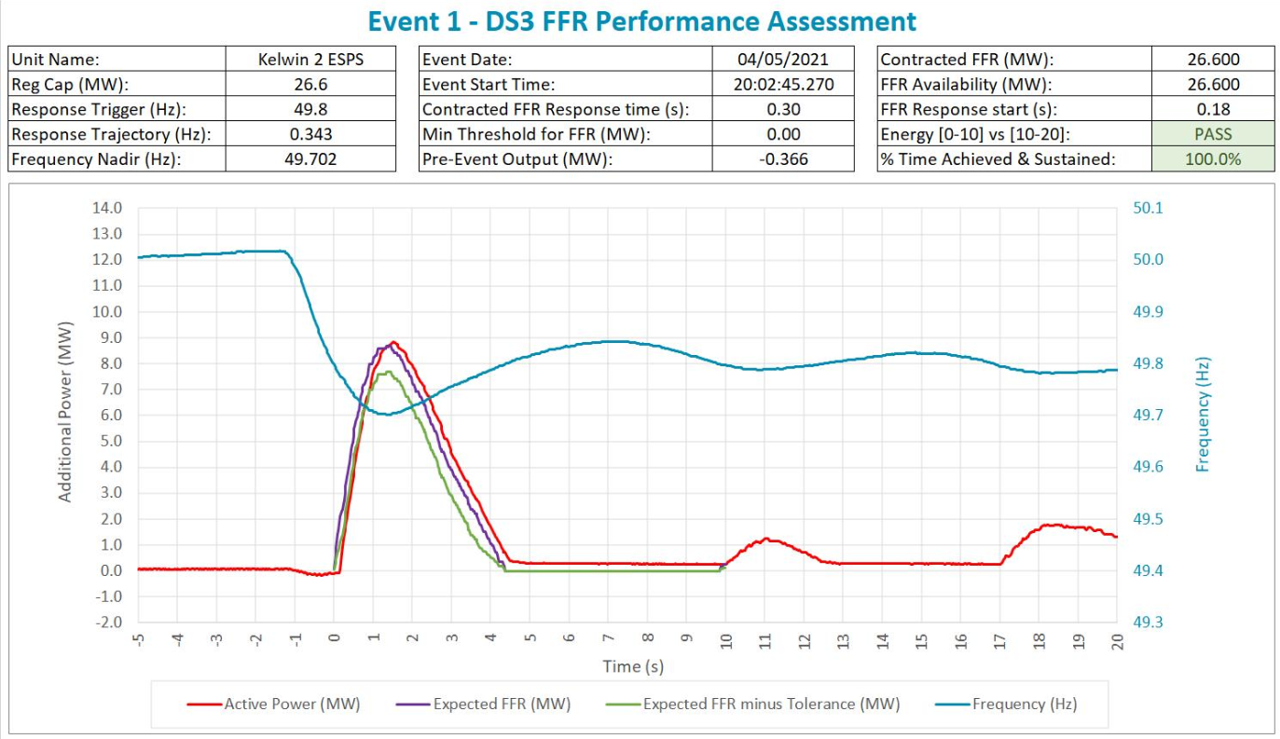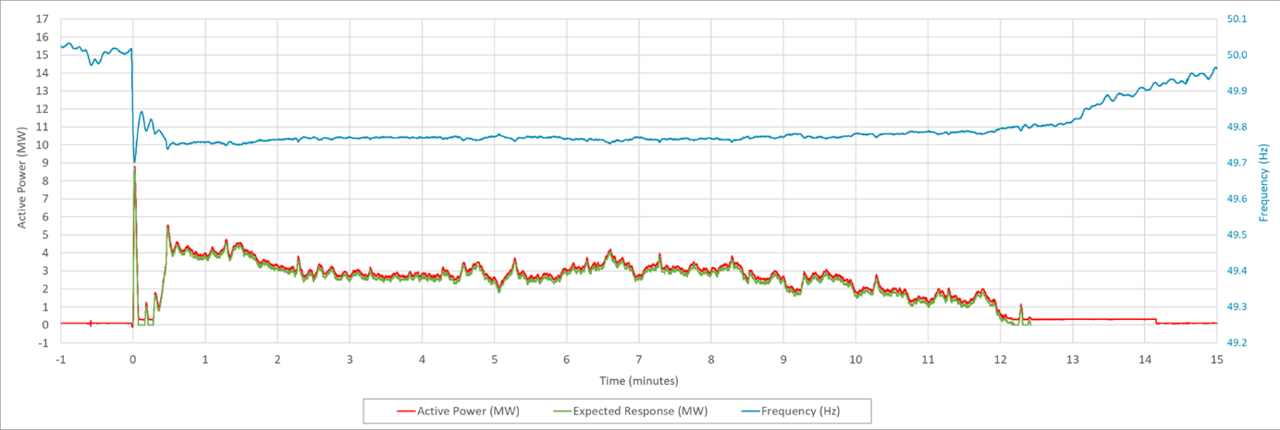
Statkraft batteries step up to stabilise the grid when needed the most
Statkraft’s Kilathmoy and Kelwin-2 battery storage projects, stepped up to support our electricity grid last night (Tuesday 4 May) when a long under-frequency event occurred. It was the longest under-frequency event on the Irish grid in years based on our data.
The grid dropped below normal operating range (49.9Hz- 50.1Hz) around 8pm and stayed there for about 14 minutes.
Data captured from Statkraft’s newest battery, Kelwin-2, shows that it provided its initial response to the event in just 180 milliseconds. Our Kilathmoy battery delivered a similar response.
Kelwin-2 is rated for 26.6MW and in its current operational mode is set to trigger for under-frequency events below 49.8Hz and to respond in a dynamic fashion - i.e. the active power export is varied dynamically in proportion to the change in frequency.
Most of the time the battery sits in standby watching the frequency. But, as soon as it sees the frequency drop below the trigger level, it responds automatically. In the blink of an eye, it injects active power to support the grid and stabilise the system.
Over the full period of the under-frequency event, the battery did just what it was designed to do from the initial drop below the 49.8Hz trigger, to the eventual recovery above that level about 12 minutes later.
Whatever the cause of this extended event, one thing is clear. Battery projects like Kelwin-2 and Kilathmoy will provide reliable, ultra-fast active power reserves to stabilise the grid when needed. That is why they are a key part of the puzzle in allowing high levels of renewable energy to operate on our electricity grid as we drive towards a 70% renewable electricity target for 2030.
Kelwin-2 just went live on 1 April this year, just one year after Kilathmoy, the first grid-scale battery in Ireland.

Figure 1 shows the ultra-fast initial response of the battery- providing its initial response in just 180ms

Figure 2 shows the trend over the full period of the under-frequency event.
For further information






















